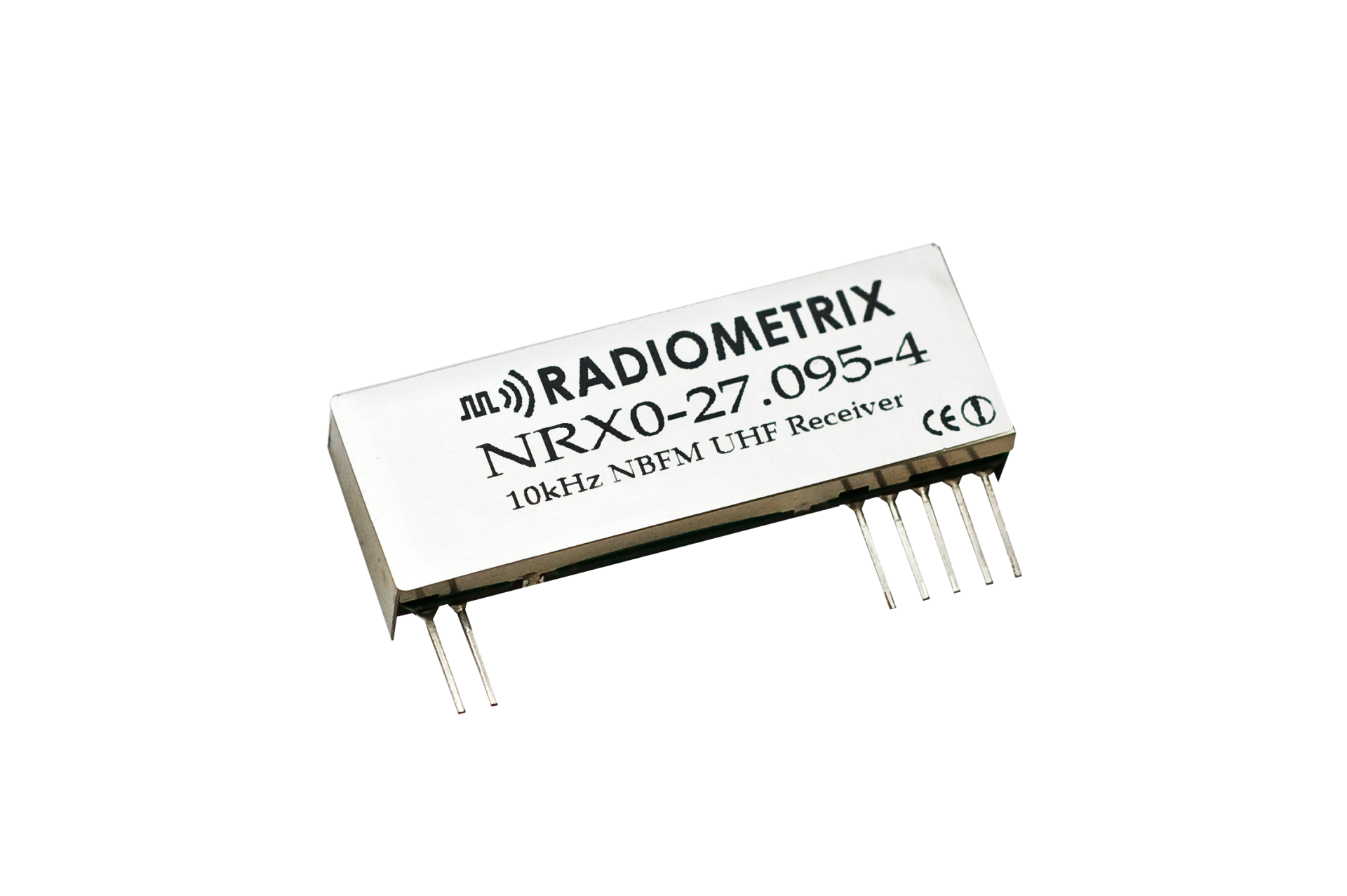
The HF module family is conveniently divided into two broad groups: SIL package and LM family
The NTX0 and NRX0 correspond directly to the NTX1 and NRX1. The transmitter is a simple crystal controlled 10mW design, while the receiver is a sensitive single channel crystal-controlled superheterodyne. Units are supplied on 27.095MHz as standard, but other frequencies can be ordered (subject to crystal MOQ and lead times)
The LMT0 and LMR0 similarly correspond to the LMT1 and LMR1. Both use a low noise VCO controlled by a PLL locked in turn to a stable TCXO. A small on-board microcontroller programs the PLL and provides multichannel operation, with the channel frequency controlled via either a parallel or a serial port. The default power output for the LMT0 is also 10mW, but for applications where more power is allowed (such as model control in the UK) versions capable of up to 100mW can be supplied.
All these modules have feature rich user interfaces. The transmitters provide separate enable (TXE) pins and have a digital (or analogue with external parts) baseband mod input. The receivers all provide both analogue AF and squared-up logic compatible digital (RXD) outputs, along with 60dB (min.) dynamic range RSSI outputs.


